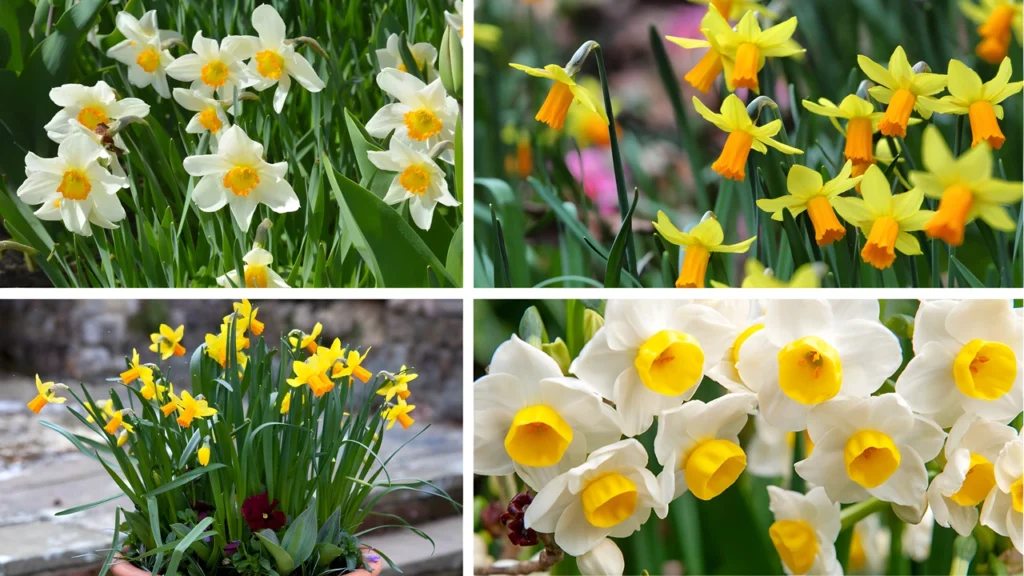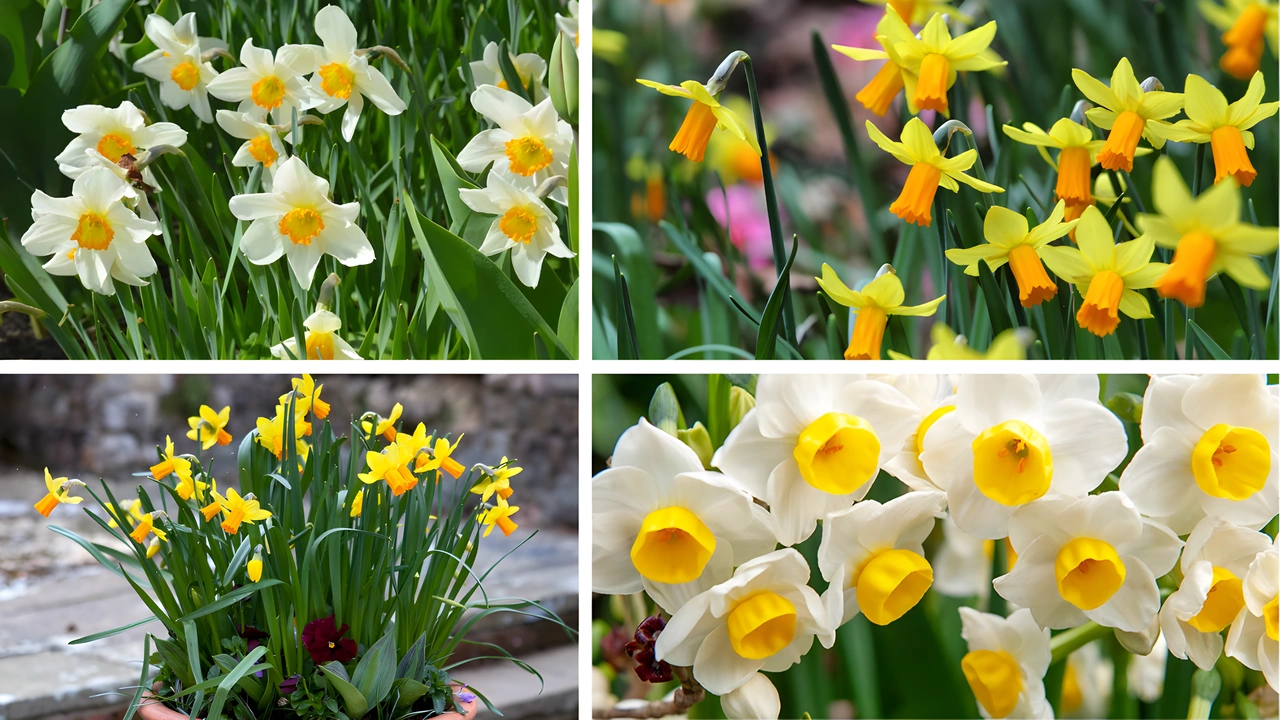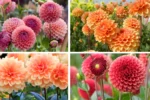Join on WhatsApp
Get the latest updates directly on WhatsApp – motivation, news & more!
If you’re dreaming of bright, golden blooms that announce the arrival of spring, learning how to grow and care for daffodils is the perfect place to start. Daffodils are one of the most reliable and cheerful spring flowers, blooming year after year with minimal maintenance. This guide will provide easy steps for stunning seasonal flowers, helping you plant, nurture, and enjoy a vibrant daffodil display in your garden, patio, or even balcony.

Whether you’re a novice gardener or a seasoned grower looking to refresh your garden with a splash of color, this article breaks down how to grow and care for daffodils into clear, manageable steps. From choosing the right bulbs to post-bloom care, each paragraph is tailored to ensure your daffodils flourish seasonally and beautifully.
1. Choosing the Right Daffodils to Grow and Care for Seasonal Flowers
One of the first and most important steps in mastering how to grow and care for daffodils is choosing the right type of daffodil. There are dozens of daffodil varieties, each offering unique shapes, sizes, and blooming times.
Popular Types of Daffodils for Stunning Seasonal Flowers:
| Daffodil Type | Bloom Time | Flower Shape | Best Use |
|---|---|---|---|
| Trumpet Daffodils | Early Spring | Classic large bloom | Borders and beds |
| Double Daffodils | Mid-Spring | Ruffled double bloom | Showy containers |
| Miniature Daffodils | Early to mid | Small, delicate | Rock gardens, pots |
| Split-Corona | Mid-Spring | Frilly centers | Mixed plantings |
When learning how to grow and care for daffodils, start with varieties that match your garden’s sunlight and soil conditions. Choose bulbs that are firm, unblemished, and heavy for their size. These will offer the most stunning seasonal flowers when planted correctly.
2. When and Where to Plant Daffodils for Best Seasonal Growth
Knowing when and where to plant your bulbs is key to understanding how to grow and care for daffodils successfully. Timing and placement directly affect how stunning your seasonal flowers will look when they bloom.
Planting Season:
- Best Time to Plant: Fall (from late September to early November)
- Why Fall?: Bulbs need time to establish roots before the winter freeze.
Ideal Growing Conditions:
| Condition | Requirement |
|---|---|
| Sunlight | Full sun to partial shade |
| Soil Type | Well-drained, loose, fertile soil |
| pH Range | Slightly acidic to neutral (6-7) |
| Drainage | Essential to prevent bulb rot |
To grow and care for daffodils effectively, avoid planting them in overly damp or shady areas. Position them in places where they receive at least six hours of sunlight for the best seasonal flower display.
3. Step-by-Step Planting Guide: How to Grow and Care for Daffodils from Bulbs
This section outlines the easy steps in the planting process, a vital part of how to grow and care for daffodils that ensures the bulbs are positioned for success.
Step-by-Step Instructions:
- Dig a Hole
For large daffodil bulbs, dig a hole 6 inches deep; for smaller varieties, 3–4 inches deep. - Position the Bulbs
Place the bulb with the pointy side up and the root side down. - Spacing
Space bulbs 4–6 inches apart to give roots room to expand and avoid overcrowding. - Backfill and Water
Cover with soil, gently tamp down, and water thoroughly. - Mulch (Optional)
Apply a light layer of mulch to regulate soil temperature and retain moisture.
Following these easy steps helps ensure that your daffodils bloom into stunning seasonal flowers without much maintenance later on.
4. Watering, Feeding, and Ongoing Care to Keep Daffodils Healthy
Maintaining proper watering and feeding routines is essential when learning how to grow and care for daffodils throughout the season.
Watering:
- Fall: Water after planting and during dry spells to help bulbs root.
- Spring: Water only if there is less than 1 inch of rainfall per week.
- Post-Bloom: Watering can be reduced significantly.
Feeding:
| Time to Fertilize | Type of Fertilizer | Purpose |
|---|---|---|
| Early Spring | Bulb-specific fertilizer | Supports blooming and root development |
| Post-Bloom | Balanced fertilizer (10-10-10) | Replenishes nutrients for next year |
Watering too much can lead to bulb rot, while over-fertilizing can produce excessive leaves but few flowers. Stick to moderate and timely care for daffodils to enjoy stunning seasonal flowers without fuss.
5. Deadheading and Post-Bloom Care: Grow and Care for Daffodils the Right Way
Understanding post-bloom care is critical in the full cycle of how to grow and care for daffodils. Deadheading and proper leaf care influence the next year’s blooms.
Post-Bloom Care Tips:
- Deadhead Flowers: Once flowers fade, snip off the heads to prevent seed formation.
- Leave the Leaves: Don’t cut the foliage. Let it yellow and die back naturally (takes about 6 weeks).
- Don’t Braid or Tie Leaves: This reduces photosynthesis and weakens the bulb.
By allowing the foliage to feed the bulb, you ensure it stores enough energy for the following year’s stunning seasonal flowers.
6. Dividing and Replanting Daffodils to Maintain Stunning Seasonal Flowers
After a few seasons, daffodils can become crowded, leading to fewer blooms. Part of knowing how to grow and care for daffodils is recognizing when to divide and replant them.
Signs It’s Time to Divide:
- Fewer blooms each spring
- Overcrowded patches
- Yellowing foliage without flowering
How to Divide:
- Wait until foliage has died back.
- Carefully dig up the clump with a garden fork.
- Separate bulbs by hand, discarding any that are soft or rotted.
- Replant healthy bulbs immediately or store them in a cool, dry place.
This rejuvenation method ensures your daffodil displays remain vibrant and full, delivering stunning seasonal flowers each spring.
7. Common Issues and How to Grow and Care for Daffodils Despite Them
Even though daffodils are easy to grow, gardeners can face occasional issues. To truly master how to grow and care for daffodils, it’s important to understand common problems and how to solve them.
Troubleshooting Guide:
| Issue | Cause | Solution |
|---|---|---|
| No blooms | Overcrowding, too much nitrogen | Divide bulbs; reduce fertilizer |
| Rotting bulbs | Poor drainage | Improve soil or plant in raised beds |
| Yellow streaks on leaves | Viral infection | Remove affected plants; sanitize tools |
| Short stems | Planted too shallow | Replant bulbs deeper |
Most daffodil issues are preventable with proper care and quick action. This ensures you consistently grow and care for daffodils with confidence.
Seasonal Care Chart: Grow and Care for Daffodils Throughout the Year
| Season | Grow and Care Tasks |
|---|---|
| Fall | Plant bulbs, water, mulch |
| Winter | Monitor for frost heaving, minimal care needed |
| Early Spring | Fertilize, watch for shoots, water if dry |
| Mid Spring | Enjoy blooms, deadhead as flowers fade |
| Late Spring | Let leaves die back naturally, no cutting early |
| Summer | Divide and replant if necessary |
This seasonal chart helps keep you on track in knowing how to grow and care for daffodils year-round.
Conclusion: How to Grow and Care for Daffodils with Easy Steps for Stunning Seasonal Flowers
Now that you’ve explored exactly how to grow and care for daffodils, you’re ready to transform your garden with radiant, low-maintenance blooms. Following these easy steps for stunning seasonal flowers—from choosing quality bulbs and planting in the right location, to post-bloom care and replanting—ensures a rewarding gardening experience year after year.
Daffodils are more than just beautiful—they’re a symbol of renewal and resilience. When you understand how to grow and care for daffodils properly, you invest in a flower that rewards you with bursts of sunshine each spring. With just a little attention and patience, you’ll enjoy dazzling displays that bring seasonal beauty to your garden and joy to your home.


